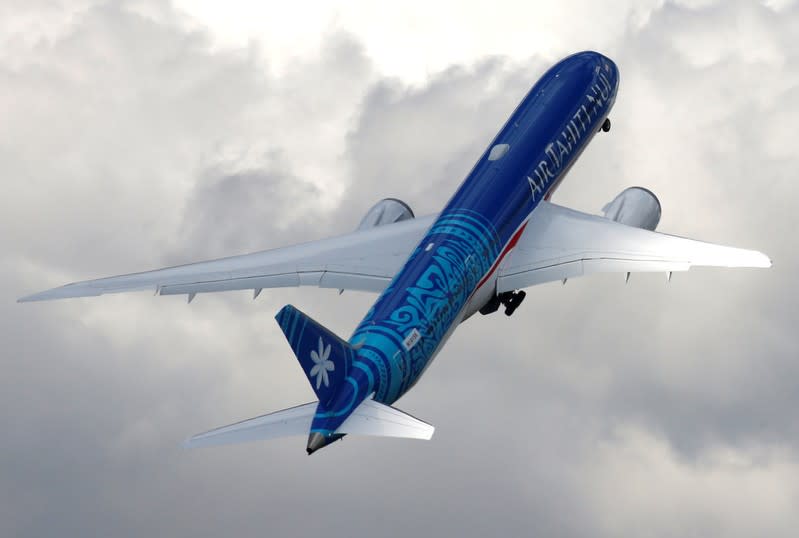Flying 14 hours or more? Boeing sees longer routes as 'key' for growth
By Marcelo Rochabrun
SAO PAULO (Reuters) - Serving airlines that will operate flights lasting 14 hours or longer is a "key consideration" for Boeing Co's <BA.N> global growth strategy over the next 20 years, an executive said on Tuesday.
Those flights, sometimes called ultra-long haul, have grabbed headlines in recent weeks as Qantas Airlines Ltd <QAN.AX> tested a 19-hour flight between New York and Sydney using a Boeing 787-9 and prepares to test an even longer flight between Sydney and London with the same plane.
"Globally, if long haul is growing 5% per year, ultra long haul is growing twice that per year," Darren Hulst, a managing director at Boeing, told Reuters in Sao Paulo while discussing market forecasts for the next 20 years.
Commercial aviation overall is expected to grow 4.6% per year on average between 2019 and 2038, according to a Boeing market study released in September, representing a slight slowing from the previous pace of about 5%, according to figures compiled by the World Bank.
Growth in the ultra-long haul sector highlights changing habits among passengers, who are willing to travel longer. It is also a tribute to the increasing fuel efficiency of aircraft that allow for such routes to be flown profitably.
But Hulst said this market has developed without Boeing expecting it to, pointing specifically to the carrier's use of the 787-9 plane to fly ever longer trips.
This plane is now the "key player" for ultra long-haul flights involving midsized wide-body planes.
"When we designed the airplane, I think the sweet spot for where we saw the airplane operating was between nine and 14 hours," Hulst said.
Boeing competitor Airbus SE <AIR.PA> is also targeting the segment above 14 hours with the A350-900ULR, which Singapore Airlines <SIAL.SI> currently uses to fly the roughly 18 hours between Singapore and the New York metro area. That flight is the longest currently in commercial operation.
Airbus also plans to soon launch an Ultra Long Range version of the A350-1000.
Qantas currently operates a regularly scheduled flight between Perth, Australia, and London which is the longest commercial flight using a Boeing 787-9. But that title could change if the carrier decides to operate the Sydney-New York route commercially.
"This is more capability than we originally thought our customers would use it for," Hulst said.
(This story corrects location of Perth to Australia from New Zealand in paragraph 11.)
(Reporting by Marcelo Rochabrun; Editing by Marguerita Choy)

 Yahoo Finance
Yahoo Finance 

